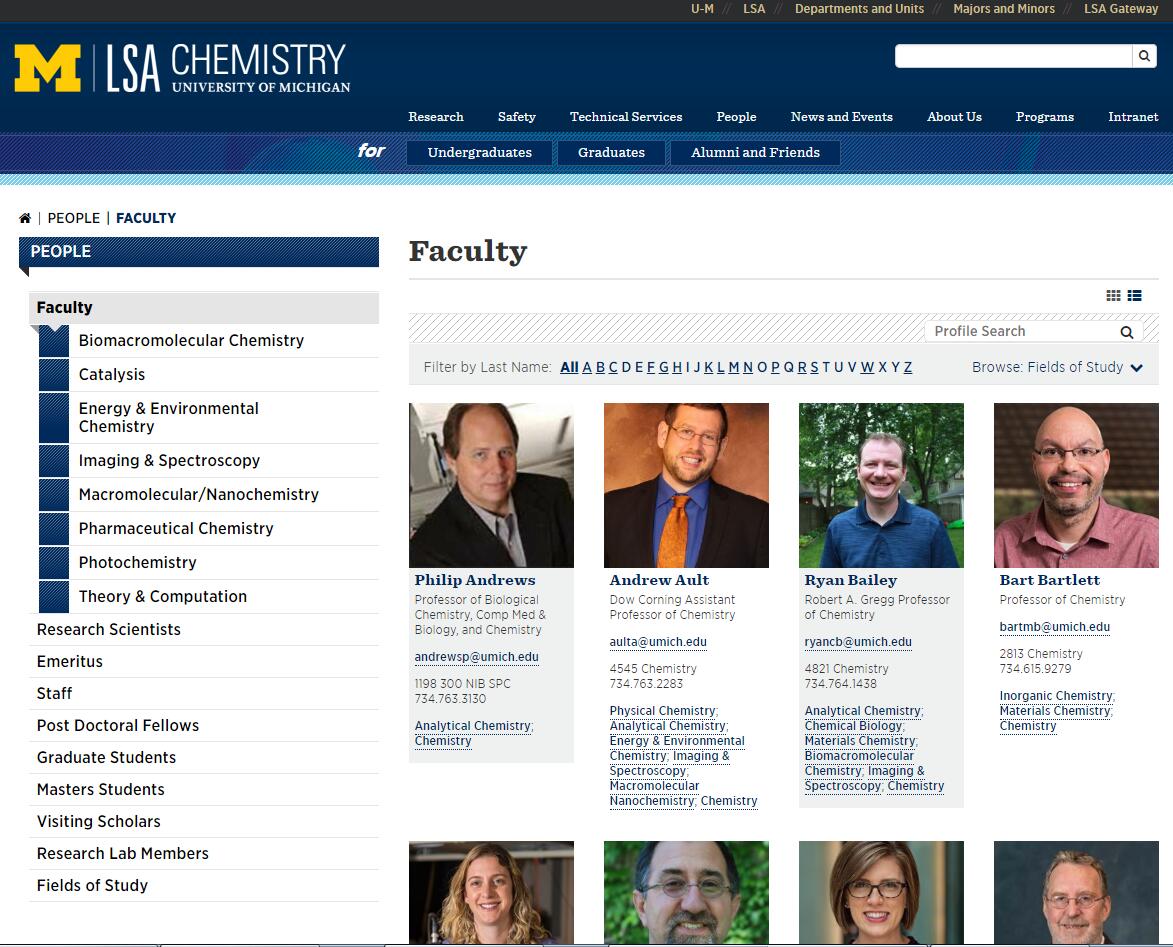If you are going to pursue a graduate degree in chemistry within the state of Michigan, then you have come to the right place. On this website, you will find the 4 best chemistry schools in Michigan. Please note that these rankings are based on student reviews, graduation rates, and the academic surveys submitted by peer colleges and universities throughout Michigan.

| Ranking | Graduate Chemistry |
| 1 | University of Michigan–Ann Arbor Department of Chemistry Address: 930 N. University, Ann Arbor, MI 48109-1055 Phone: (734) 615-9852 E-mail: chemAdmissions@umich.edu Website: http://www.umich.edu |
| 2 | Michigan State University Department of Chemistry Address: 381 Chemistry Building, East Lansing, MI 48824-1322 Phone: (517) 355-9715 E-mail: gradoff@chemistry.msu.edu Website: http://www.chemistry.msu.edu |
| 3 | Wayne State University Chemistry Department Address: 5101 Cass Avenue, Detroit, MI 48202 Phone: (313) 577-7784 Website: http://www.chem.wayne.edu |
| 4 | Michigan Technological University Department of Chemistry Address: 1400 Townsend Drive, Houghton, MI 49931 Phone: (906) 487-2048 E-mail: gradadms@mtu.edu Website: http://www.chemistry.mtu.edu |

Population of Michigan
About 9,900,000 people live in the state of Michigan (8th place in the USA), while the average population density is about 68 people per km 2 (16th place in the USA). Michigan is the only U.S. state to have a population decrease (0.6%) in the 2010 census compared to 2000.
The largest city in the state is Detroit, with over 900,000 people (11th in the US). Other major cities in Michigan are Grand Rapids (about 200,000 residents), Warren (about 135,000 residents), Sterling Heights (about 125,000 residents). About 115,000 people live in the state capital, Lansing.
The largest urban agglomerations in Michigan formed around Detroit (about 4,400,000 people, 11th in the US) and Grand Rapids (about 800,000 people).
The racial makeup of Michigan’s population is:
- White – about 80%
- Blacks (African Americans) – about 14%
- Asians – about 2.4%
- Native Americans (Indians or Eskimos of Alaska) – about 0.58%
- Hispanic or Latino (of any race) – about 4.5%
The largest ethnic (national) groups among the population of the state of Michigan:
- Germans – about 22%
- Descendants of immigrants from Africa (African Americans) – about 14%
- Irish – about 12%
- English – about 11%
- Poles – about 9%
- French (or Canadians of French ancestry) – about 7%
It is obvious that immigrants from Europe predominate among the residents of Michigan. In addition to the listed ethnic groups, we can mention a significant number of descendants of immigrants from the Scandinavian countries, primarily Finns living on the Upper Peninsula.
About 300,000 Michigan residents trace their ancestry to the Middle East. For example, in Dearborn, near Detroit, about a third of the residents are of Arab origin. They are mainly descendants of immigrants from Lebanon and Syria who came to the US in the twenties of the XX century, during the rapid development of the automotive industry in the US.
The largest groups among Michigan residents in relation to religion are:
- Catholics – more than 2,000,000 people
- Lutherans – about 250,000 people
- Methodists – about 225,000 people
- Evangelical Lutherans – about 160,000 people
- Jews – about 110,000 people
- Muslims – about 100,000 people
Due to the peculiarities of the geography of Michigan, located on two peninsulas, as well as serious regional differences in the economy, the population of the state is also very divided. There were even several attempts to separate the Upper Peninsula of Michigan (and part of the state of Wisconsin) into a separate state (they even came up with a name for it – Superior, after the name of Lake Superior, Lake superior).
The residents of the Upper Peninsula are sometimes called “yupers” (yoopers, from Upper Peninsula – Upper Peninsula), and the residents of the Lower Peninsula – “trolls” (trolls, it is understood that they live below the bridge connecting the peninsulas).
Michigan is home to several major universities, the most notable of which are Michigan State University, the University of Michigan, and Wayne University.
Michigan State University, located in East Lansing, was founded in 1855 as the first agricultural college in the United States of America. Today it is the ninth-largest university in the United States, with nearly fifty thousand students.
In professional sports in the United States, Michigan is represented by a number of teams – baseball Detroit Tigers, football Detroit Lions, hockey Detroit Red Wings and basketball Detroit Pistons.
